According to the State of Michigan, the total number of COVID cases in Michigan rose to 55,608 on May 27, an increase of 504 cases from the previous day. This total was equivalent to 557 cases per 100,000 people (Chart 4). Of those 504 cases 127 were documented in Southeastern Michigan. This means that of the new daily COVID cases Southeastern Michigan accounted for 25 percent of them. These numbers again show that majority of the new cases being reported in Michigan are coming from outside of Southeastern Michigan. In Chart 1 we show that the State total for number of COVID cases on May 25 was 54,927. The five-day rolling average for the total number of COVID cases (Chart 1) reflects a smoother curve and adjusts for fluctuations in testing and/or the quality of reporting or failure to report.
Chart 2 shows that, based on the five-day rolling averages, the growth of new COVID cases in Southeastern Michigan continued to level off for the counties in the region. On May 25 the number of cases in Detroit reached 10,752, the highest in the region, and Wayne County reported the second highest number of cases at 9,89. On May 25, the five-day rolling average for the number of COVID cases in Oakland County was 8,227, and Macomb County reported 6,517.
The City of Detroit had 1,616 COVID cases per 100,000 people on May 27, an increase from 1,608 the day before (Chart 3). This is based upon a reported increase of 54 new COVID cases, bringing the total number of COVID cases in Detroit to 10,872. Wayne County reported 848 cases per 100,000 people, and Oakland County had 657 cases per 100,000 people. These per capita rates were based upon 9,127 total cases for Wayne and for 6,558 Oakland. Macomb County reported 750 cases per 100,000 people, which is based upon 8,260 cases.
The daily data highlighted in these posts is from Michigan.gov/coronavirus, where data is updated daily at 3 p.m. Historical data were supplied from covidtracking.com, which republishes COVID data from the State. Additionally, the case totals do not reflect the number of people who have recovered, just those who have been infected.
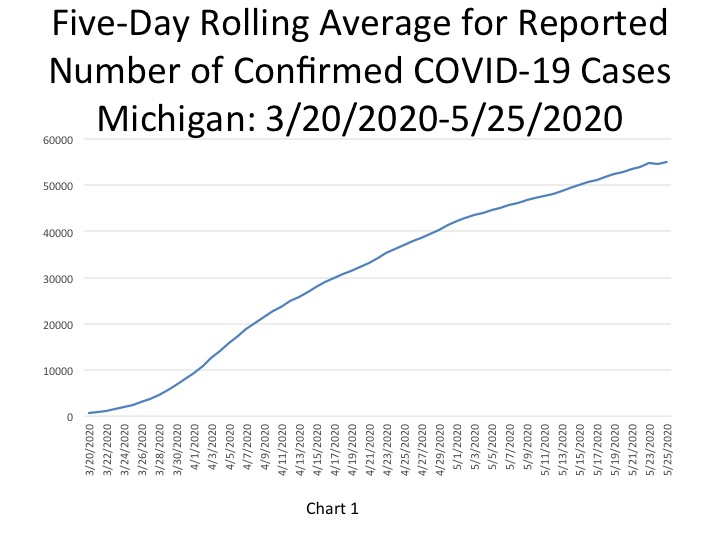
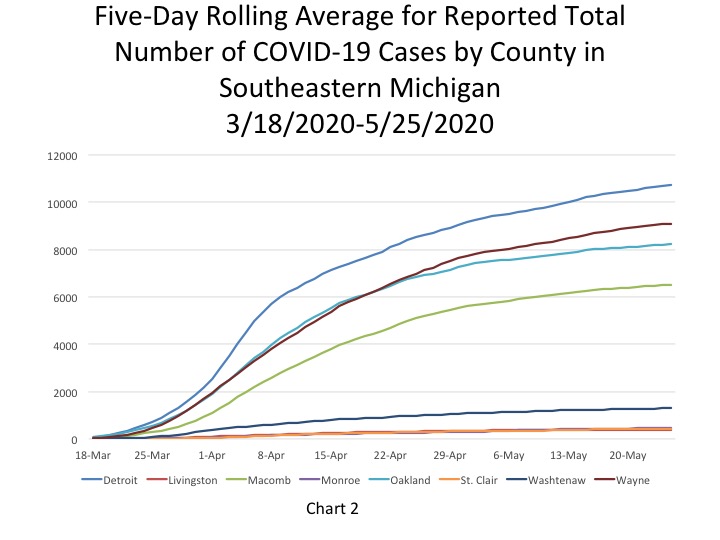
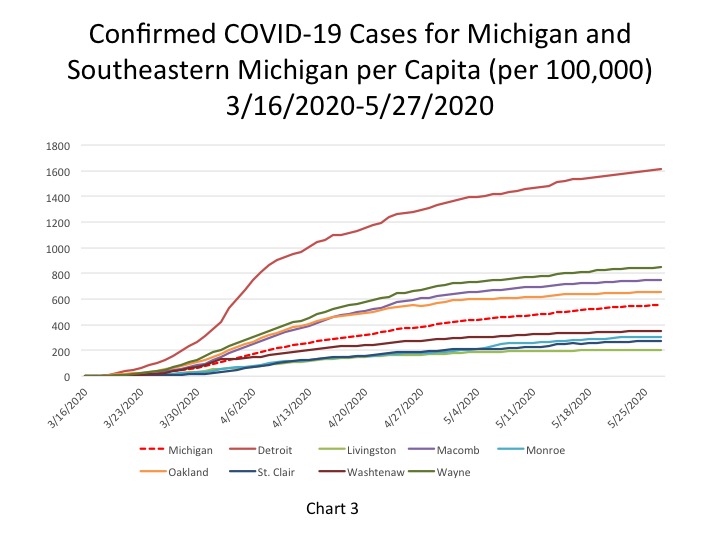
Chart 4 shows that Detroit reported the highest number of daily cases at 57 on May 25, a increase of 5 from the day prior. While Detroit experienced a small increase the counties in the region either remained flat or experienced a small decrease. Wayne County’s numbers have been decreasing since May 21.
On May 27 the per capita rate for the number of new daily COVID cases per 100,000 people was 5 for the State, which was equivalent to 504 new cases. While the State’s per capita rate increased, as did Macomb and Oakland counties’, Detroit’s decreased. The City of Detroit’s rate decreased from 14 new COVID cases per 100,000 people on May 26 to a rate of 8 on May 27. Detroit’s decreased rate was equivalent to 54 new cases. Wayne County reported 2 new COVID cases per 100,000 people for the fourth day in a row, which was equivalent to 19 new cases. Oakland County reported a per capita rate of 2 new case per 100,000 people on May 27, which was equivalent to 20 new cases, and Macomb County reported a rate of 3, which was also equivalent to 30 new cases. Overall, 127 new COVID cases were reported in Southeastern Michigan on May 27. This is a decrease of 13 from the day prior.
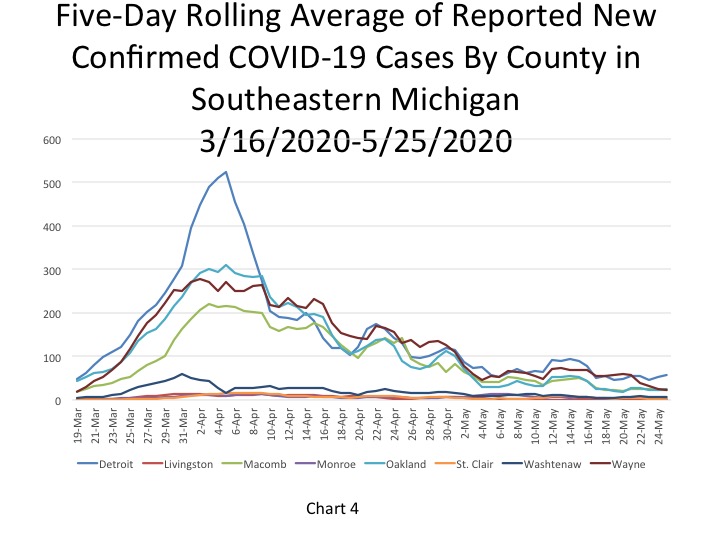
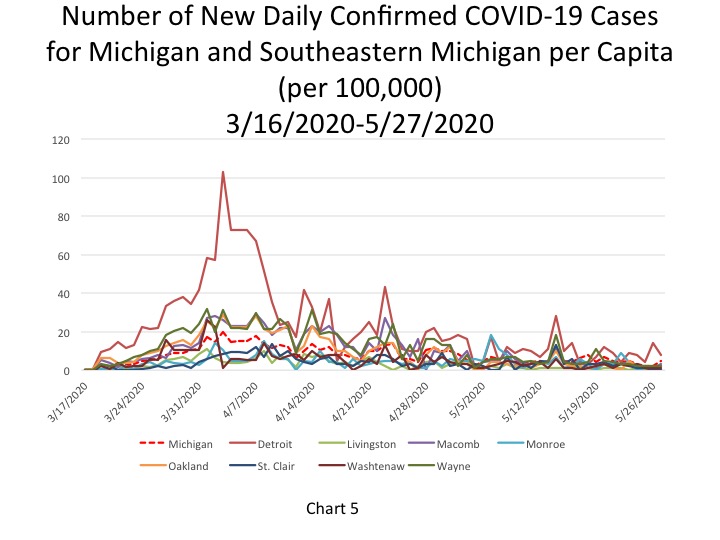
In Chart 6, the five-day rolling average for the number of deaths in Michigan shows a continuing slow increase (a lagged number of 5,258 deaths, an increase of 35deaths). The actual reported COVID-19 on May 27 was 5,334, an increase of 68 deaths from the day prior. Of those 68 deaths 14 were identified by reviewing death certificates and the COVID database and then tacked onto the daily total. Furthermore, of those 68 deaths Southeastern Michigan accounted for 48 of them.
Chart 7 (a 5-day rolling average) portrays how the total number of COVID deaths in Southeastern Michigan continues to increase at a much slower rate, with Detroit reporting the highest cumulative number of deaths at 1,329 on May 25. Wayne County had the second highest total at 1,044 on May 25.
Chart 8 portrays the total number of COVID deaths per 100,000 people on May 27, and all the per capita rates in Southeastern Michigan remained the same for at least the third day in a row, showing that the number of new deaths are in fact stabilizing. The cumulative total of COVID deaths per 100,000 people in Detroit was 197 (representing 1,347 deaths). In Wayne County there were 97 COVID deaths per 100,000 people (1,059 total deaths-no increase from the day prior). In Oakland County there were 76 deaths per 100,000 people (961 total deaths) and in Macomb County there were 89 COVID deaths per 100,000 people (784 total). Detroit had the highest single day death count in Southeastern Michigan on May 27; 21 COVID deaths were reported. The State of Michigan had 53 COVID deaths per 100,000 people, which was equal to 55,608 total deaths. The per capita rate of 53 for the State was an increase of 1 from the day prior; this is the first time the rate increased in 5 days.
Chart 9, the five day rolling average of deaths, shows the number of new statewide deaths increased by 8 from the day prior. On May 25 the State reported 35 COVID deaths. Chart 10 shows how the number of deaths in Southeastern Michigan have experienced minimal increases in the last day or two. Detroit reported 10 daily COVID deaths, which was a small increase from the day prior. This was also the highest number of new daily deaths reported in the region. On May 25, of the 35 new deaths reported 18 were reported out of Southeastern Michigan. These numbers are based on 5-day rolling averages.
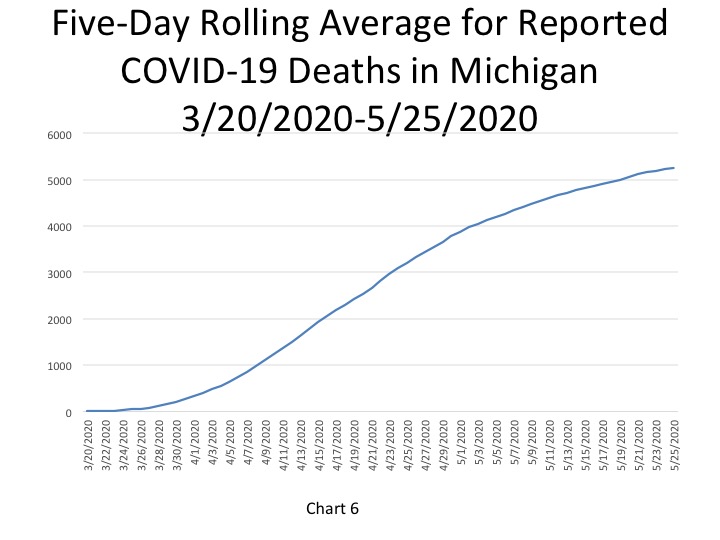
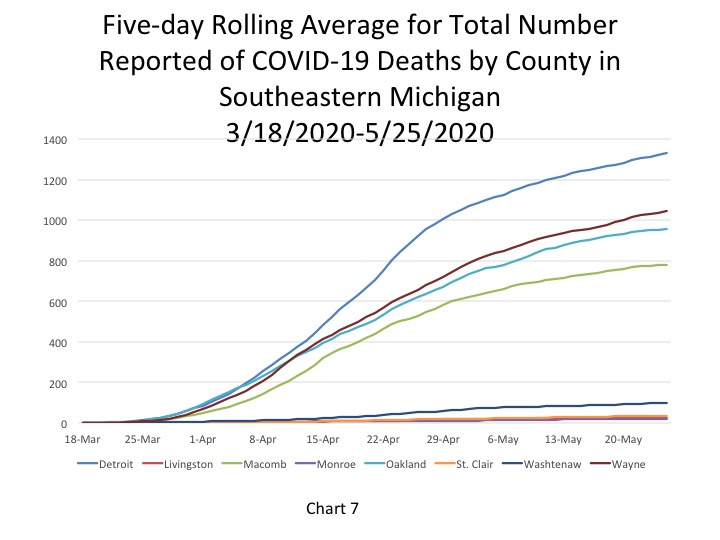
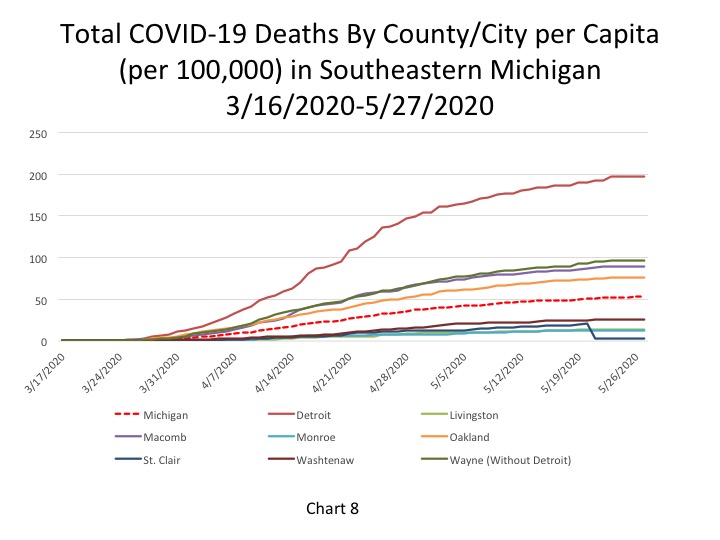
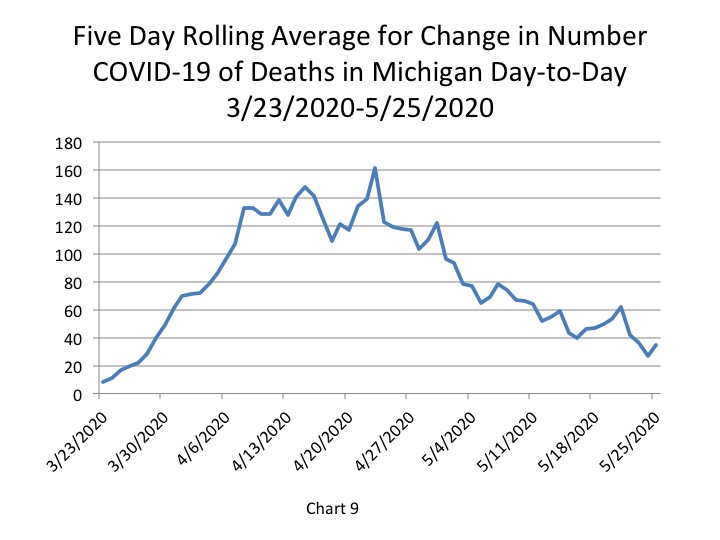
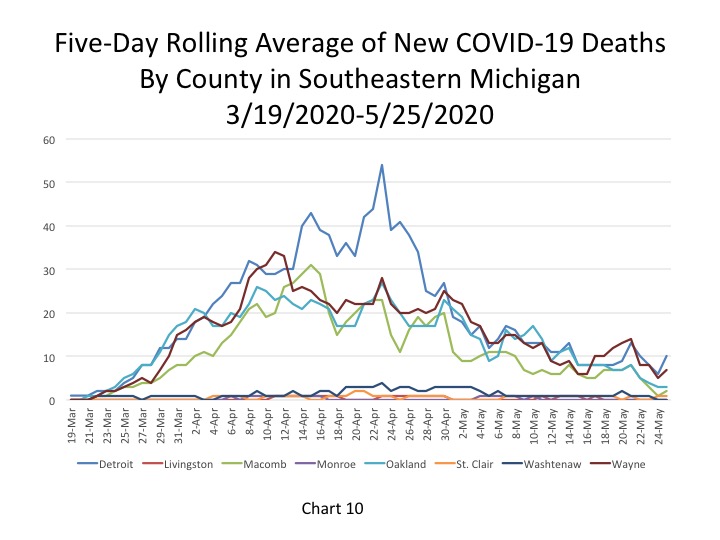
On May 27 Detroit reported a fatality rate of 12.4 percent, which was a small increase from the day prior but a number the City has reported several times over the last week. The fatality rate in Macomb County again hit 12 percent, and the State continued to report a fatality rate of 9.6 percent for 9 days in a row.
One reason we may be seeing such high fatality rates in Michigan is due to the low testing rates. When only having-presumably-a lower of number confirmed COVID cases than is actually likely due to the limited availability of tests, the fatality rate appears higher because the base comparison is smaller than it might be.
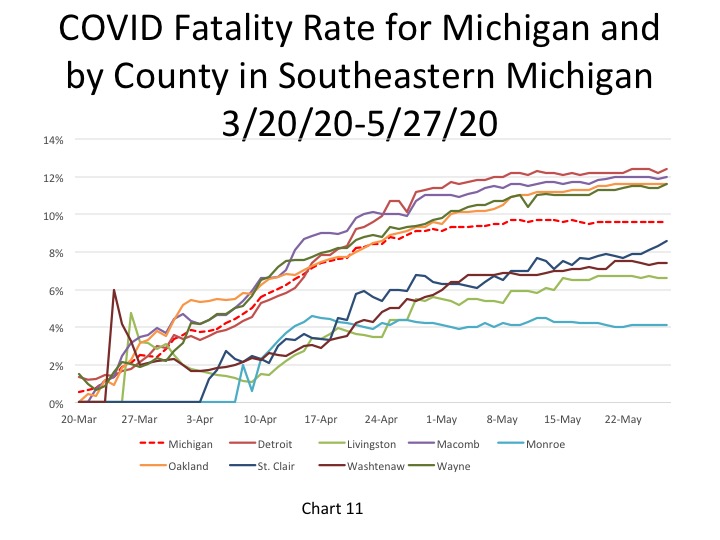
The number of new cases COVID cases reported in Michigan did nearly doubled on May 27 after a lull over the holiday weekend. However, 75 percent of those new cases came out of areas other than Southeastern Michigan. As the holiday weekend gets farther away we will see have to see if the daily COVID numbers continue to increase or decline, as we all hope.